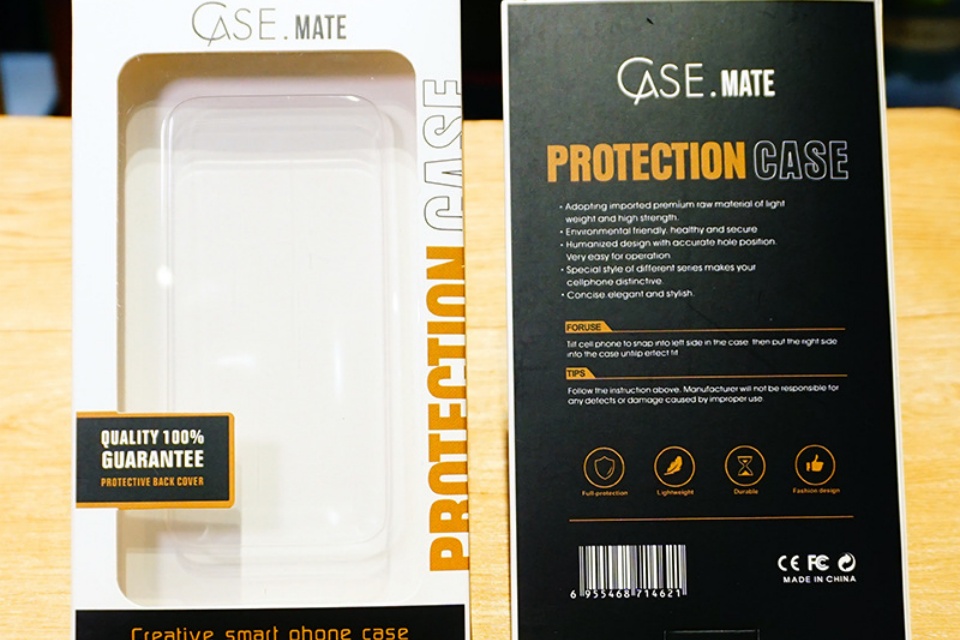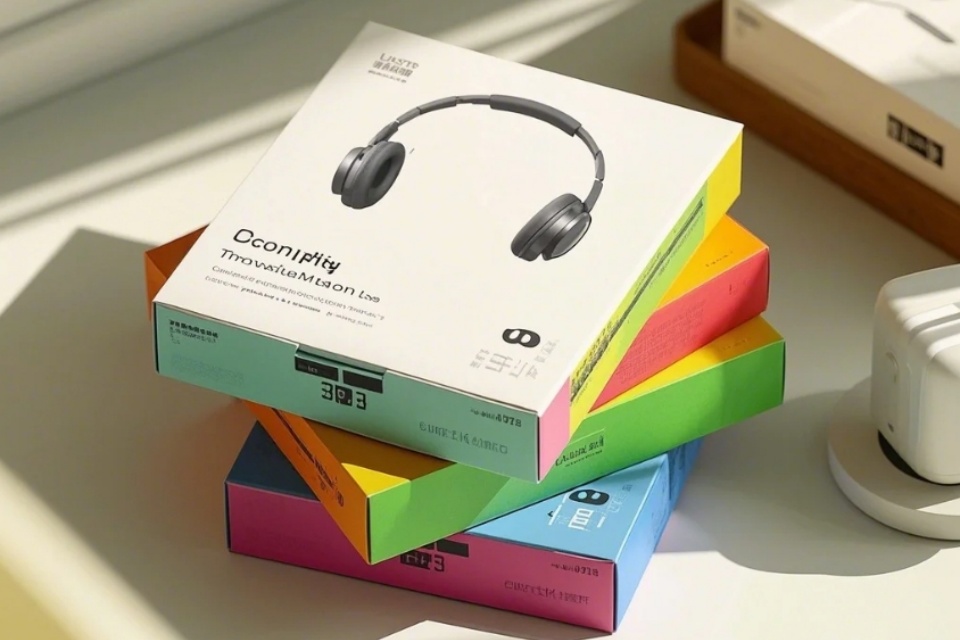Lastest News
Packaging Small Gadgets Vs. Large Electronics
Packaging Small Gadgets Vs. Large Electronics
Summary
Packaging small gadgets vs. large electronics examines the diverse strategies and considerations involved in packaging electronic devices, reflecting the distinct challenges associated with different product sizes. Packaging plays a crucial role in ensuring product safety, enhancing user experience, and communicating brand identity, especially given the fragility and high value of many electronics. Notably, the packaging for smaller gadgets, such as smartphones and tablets, differs significantly from that of larger electronics like televisions and appliances, necessitating unique materials and designs to protect against damage during transit.
The importance of this topic is underscored by the growing consumer demand for sustainable practices in packaging. As environmental concerns rise, manufacturers are increasingly pressured to adopt recyclable, biodegradable, or reusable materials without compromising product integrity. The packaging industry is responding with innovations such as eco-friendly inks and bioplastics, though these alternatives may pose their own environmental challenges, including recycling complexities and resource consumption during production. Additionally, regulatory changes, such as the European Union's Eco-design for Sustainable Products Regulation, are pushing companies to evaluate the lifecycle impacts of their packaging, further complicating the decision-making process.
Design considerations also extend to user experience and branding, where intuitive packaging can enhance customer satisfaction while reflecting a brand's identity. Successful packaging must balance protective capabilities with ease of use, creating an efficient unboxing experience that delights consumers. Prominent brands like Apple and Coca-Cola illustrate the power of packaging design in shaping consumer perceptions and driving sales, reinforcing the notion that packaging is not just a protective measure but a vital component of the marketing strategy.
Overall, the discourse surrounding the packaging of small gadgets versus large electronics highlights the intricate interplay between protection, sustainability, user experience, and branding. As trends shift towards more environmentally responsible practices, businesses face the challenge of innovating their packaging solutions to meet evolving consumer expectations while ensuring product safety and regulatory compliance.
Types of Packaging
Primary Packaging
Primary packaging refers to the materials that come into direct contact with the product, ensuring its safety and integrity. In the context of electronics, this includes specialized protective elements designed to secure high-value and fragile items. For instance, electronic components may be packaged in antistatic bags, while screens might be wrapped in protective plastic films. This type of packaging prioritizes safety over aesthetics, focusing on the functionality required to protect the items during storage and transit.
Secondary Packaging
Secondary packaging serves as a protective layer surrounding the primary packaging, often structured as boxes with foam inserts to prevent movement and damage during transport. Branding on secondary packaging is generally minimal, featuring printed logos or images, as seen in Apple's minimalist white boxes or the vibrant graphics of gaming laptops. This form of packaging is critical for maintaining the safety of the product while providing a coherent brand identity.
Materials Used in Packaging
The materials used for packaging vary widely and can significantly impact both functionality and sustainability.
- Plastic: Frequently used for its versatility and durability.
- Glass: Often utilized for products requiring high barriers against moisture and gases.
- Metal: Aluminum and steel are popular for food and beverage packaging due to their strength and recyclability.
- Paper and Cardboard: Increasingly favored for their sustainability attributes, being recyclable and biodegradable.
Sustainable Packaging Innovations
In response to growing environmental concerns, the packaging industry is shifting towards sustainable practices. This includes the adoption of materials that are reusable, recyclable, or biodegradable. Innovations such as eco-friendly inks and bioplastics are emerging as alternatives to traditional packaging materials, though they come with their own environmental challenges, such as difficulties in recycling and resource consumption during production.
Special Considerations for Electronics Packaging
Designing packaging for electronic devices involves a thorough evaluation of various factors, including mechanical protection, heat dissipation, and electromagnetic interference (EMI) shielding. Engineers utilize advanced simulation tools to ensure that the packaging not only protects the product but also meets aesthetic and functional demands. The overall user experience is crucial; thus, packaging should be intuitive and facilitate ease of opening while remaining secure against tampering.
Functional Aspects of Packaging
Packaging for electronics serves multiple functional roles, primarily focused on protection and usability, while also considering aspects of branding and sustainability.
Protection and Safety
The primary goal of electronics packaging is to safeguard the products during transit and handling. This involves using materials that cushion and secure devices against potential damage. Common packaging types include rigid cardboard boxes, often made from corrugated fiberboard, which serve as the outer container visible to consumers. Inside, various inserts like foam forms, molded pulp trays, and cardboard separators are employed to hold the device and its accessories securely in place. For smaller gadgets such as phones and tablets, packaging may consist of a combination of paperboard trays and thin plastic films to prevent scratches, while larger electronics, like televisions and appliances, require more robust packaging methods such as foam corners and protective plastic bags.
User Experience
While protection is paramount, the design of the packaging also significantly influences the user experience. Packaging should facilitate an easy unboxing process, minimizing frustration for customers. Incorporating easy-open features and clear instructions can enhance customer satisfaction and reduce the risk of damage while accessing the product. Moreover, the functionality of packaging extends to how it can be efficiently packed and unpacked, which is especially crucial for items that might need to be returned or assembled by the end user.
Sustainability Considerations
In recent years, there has been a growing emphasis on the sustainability of packaging materials. Consumers increasingly prefer recyclable or biodegradable options, leading companies to explore eco-friendly alternatives that do not compromise product safety. Utilizing materials efficiently and reducing the overall amount of packaging contribute to a more sustainable approach that resonates with environmentally conscious customers.
Branding and Market Differentiation
Packaging design also plays a critical role in branding and market differentiation. While protection is the main focus, well-designed packaging can capture consumer attention and communicate essential information about the product. This includes handling instructions and recycling guidelines, which further enhance the overall user experience. Good packaging design marries functionality with aesthetics, ensuring that products not only arrive safely but also present themselves in the best possible light, thus driving sales.
Regulatory and Compliance Issues
Regulatory compliance in packaging small gadgets and large electronics is critical to ensure safety, sustainability, and market access. Various laws and regulations govern the packaging of electronic products, particularly focusing on environmental impact, safety standards, and consumer protection.
Environmental Regulations
The European Union has instituted comprehensive regulations, such as the Eco-design for Sustainable Products Regulation, which mandates importers to conduct a product lifecycle assessment (LCA). This regulation will come into effect in 2024, requiring that the entire environmental impact of products—from raw material extraction to disposal—be evaluated and documented. Similarly, the UK's Extended Producer Responsibility (EPR) regulations are prompting brands to adopt sustainable packaging materials, pushing for the use of recyclable cardboard, molded fiber, and biodegradable inserts instead of plastics.
Safety and Hazard Standards
Packaging for electronics must adhere to various safety standards, ensuring that products are protected during transit and that potential hazards are communicated effectively. The design hierarchy for packaging emphasizes making products as hazard-free as possible, utilizing safeguards against residual hazards, and employing clear warnings as necessary. Specific industries, such as medical electronics, have stringent packaging requirements that must be met to avoid fines and maintain product integrity.
Compliance with Shipping Regulations
Proper packaging must comply with international shipping regulations, which can include labeling and tamper-resistance standards that vary across regions. For instance, electronic packaging must fulfill drop test standards and weight limits to ensure that products are shipped safely and securely. Additionally, companies must consider regional laws such as California's stringent EPR laws for packaging waste, which necessitate compliance to avoid penalties and foster a sustainable brand image.
Impact on Brand Image
Choosing compliant and sustainable packaging materials not only fulfills legal obligations but also plays a vital role in shaping brand perception. As consumers increasingly prefer brands that demonstrate environmental responsibility, businesses must align their packaging choices with their sustainability goals to enhance their market appeal. The use of eco-friendly and recyclable materials can significantly improve a company's reputation while contributing positively to the environment.
 https://zhibanggiftboxes.com/WebUser/index.php/product/mod/id/125.html
https://zhibanggiftboxes.com/WebUser/index.php/product/mod/id/125.html
Trends in Packaging
Evolution of Packaging Materials
The packaging industry is witnessing a significant shift towards more sustainable materials in response to growing environmental concerns. Traditional packaging materials such as plastic and Styrofoam are increasingly being replaced by eco-friendly alternatives, including recycled paper, cardboard, and plant-based plastics. These sustainable options not only help reduce the carbon footprint but also promote a circular economy through recycling and composting processes.
Lightweight and Flexible Packaging
Lightweight packaging is gaining popularity across the industry as it offers reduced material usage and lower manufacturing costs. Flexible packaging, which includes pouches and films, is particularly beneficial for consumer electronics that require customized shapes and durable solutions. This trend is further driven by the demands of mass-market products, which prioritize cost efficiency and high volume, leading to innovations in production methods.
Miniaturization and Advanced Packaging Techniques
The demand for compact, high-performance solutions is driving the trend of miniaturization in electronic packaging. This is particularly relevant in the consumer electronics sector, where devices such as smartphones and laptops are becoming smaller yet more powerful. Advanced packaging techniques such as system-in-package (SiP) and fan-out wafer-level packaging (FOWLP) are being adopted to enhance device efficiency and thermal management, crucial for next-generation electronics.
Smart and Customized Packaging Solutions
There is an increasing trend towards smart packaging technologies that incorporate sensors and RFID tags, providing valuable information and enhancing tracking capabilities. These innovations not only reduce waste but also help minimize over-packaging, aligning with sustainability goals. Customization is also becoming a key focus, as brands seek to differentiate their products through unique packaging designs that attract customers and improve brand affinity.
Regulatory and Consumer Pressure
Regulatory pressures are also influencing trends in packaging, as many regions implement bans on single-use plastics and other non-biodegradable materials. This shift is prompting companies to explore compostable and biodegradable materials as viable alternatives. As consumers become more environmentally conscious, there is a growing demand for packaging that reflects sustainable practices, driving manufacturers to innovate in design and materials.
Case Studies
Successful Packaging Design Examples
Studying successful package design case studies can provide valuable insights for businesses and creatives involved in comprehensive pre-press and packaging design solutions. Notable brands such as Apple, Coca-Cola, and Tiffany & Co. exemplify the effectiveness of thoughtful package design in influencing consumer behavior and driving sales. By analyzing the psychological elements behind these iconic brands, businesses can develop packaging solutions that resonate with their target audience and contribute significantly to product success.
Apple
Apple is renowned for its minimalistic and aesthetically pleasing packaging. The company employs a systematic design approach that enhances user experience from the moment a customer opens the product. Apple's packaging often includes protective materials that ensure devices are safeguarded during transit, while the sleek exterior reflects the brand's identity. This meticulous attention to detail not only protects the product but also creates a sense of anticipation and excitement for the consumer.
Coca-Cola
Coca-Cola has mastered the art of branding through its packaging. The iconic red and white color scheme and distinct bottle shape are easily recognizable, making it a powerful marketing tool. Coca-Cola's packaging also adapts to various contexts, such as limited-edition designs or seasonal themes, which keeps the brand fresh and engaging. This adaptability showcases how effective packaging can not only protect the product but also enhance brand loyalty and consumer connection.
Tiffany & Co.
Tiffany & Co. illustrates how luxury packaging can elevate the consumer experience. The brand's signature blue box has become synonymous with premium gifting. The packaging serves not just as a protective enclosure but also as an integral part of the product experience, creating an emotional connection that reinforces the brand's identity. By focusing on the sensory elements of unboxing, Tiffany & Co. emphasizes the importance of aesthetics in packaging design, particularly in the luxury sector.
Impact on Consumer Behavior
These successful case studies highlight the profound impact packaging design has on consumer behavior. Effective packaging not only protects the product but also communicates brand values and enhances the overall shopping experience. Understanding the psychology behind product packaging is essential for businesses aiming to create effective designs that resonate with consumers' subconscious minds, ultimately influencing their purchasing decisions.
Challenges and Considerations
Packaging small gadgets and large electronics presents a range of challenges and considerations that must be carefully addressed to ensure product safety, customer satisfaction, and environmental responsibility.
Multitasking and User Experience
As consumers increasingly juggle multiple tasks, packaging must cater to their need for efficiency and ease of use. The phrase "I have my hands full" underscores the importance of designing packaging that facilitates a straightforward unboxing experience. Packaging that is difficult to open can frustrate customers and lead to product damage during access, making user-friendly designs imperative for enhancing satisfaction and reducing mishaps.
Sustainability Concerns
With a growing focus on environmental sustainability, both manufacturers and consumers are prioritizing eco-friendly packaging solutions. Sustainable materials, such as recyclable, biodegradable, or reusable options, not only help mitigate environmental impact but can also enhance a company's brand image and attract eco-conscious consumers. However, implementing sustainable practices may present challenges, including supply chain complexities and cost considerations, requiring a phased approach to ensure compatibility with existing manufacturing processes.
Cost vs. Protection
Striking a balance between cost-effectiveness and protective capabilities is crucial when selecting packaging materials. While high-quality packaging is essential for safeguarding products, it is equally important to analyze the cost implications and the potential financial impact of product damage and returns. Brands need to evaluate the total cost of packaging per unit, considering factors such as materials, production, and expected damage rates. This analysis can reveal that modest increases in packaging costs may be offset by the benefits of sustainability and reduced damage rates, particularly for brands targeting environmentally conscious markets.
Trial and Testing
Before rolling out new packaging designs, conducting trial runs is vital. These tests help identify unforeseen challenges and allow for necessary adjustments without disrupting the supply chain. Engaging employees and stakeholders in the packaging process can foster a culture of innovation and sustainability, making it easier to adapt to new requirements and preferences.
Emotional Considerations in Packaging Design
Understanding consumer psychology is essential for effective packaging. Research indicates that shoppers often make decisions based on emotional responses rather than logical assessments. Therefore, packaging that conveys excitement or pleasure can significantly enhance a product's appeal. Furthermore, strategic placement of vital information, particularly in the upper left corner of the packaging, can guide consumers' attention and influence their purchasing decisions. By navigating these challenges and considerations, companies can develop packaging solutions that meet the diverse needs of their products and customers while contributing to a more sustainable future.
Logistical Considerations
Shipping electronics, whether small gadgets or large devices, involves a myriad of logistical considerations that are crucial for ensuring their safety and cost-effectiveness during transit. The sensitive nature and high value of these items necessitate a well-planned approach to logistics.
Packaging and Protection
Proper packaging is fundamental to protecting electronics during shipment. For larger items, such as home theater systems or televisions, it's recommended to use foam inserts or custom dividers to secure components and prevent movement inside the box. Additionally, filling empty spaces with packing peanuts or bubble wrap can provide extra cushioning to mitigate impact damage. For small gadgets, careful detachment and individual labeling of accessories—such as cords and chargers—are essential to keep everything organized and prevent entanglement.
Carrier Selection
Choosing the right carrier is a critical aspect of shipping electronics. Businesses should strategically select carriers that specialize in handling fragile items, as some may offer better handling practices than others. Relying on a mix of carriers can enhance reliability and delivery speed while maintaining cost control. Furthermore, establishing long-term relationships with carriers can yield discounts, making the shipping process more economical.
Insurance and Risk Management
Given the potential for loss or damage during transit, investing in insurance for high-value electronics is advisable. Carriers typically provide insurance options for an additional fee, which can safeguard against unforeseen incidents during shipping. Implementing monitoring systems, such as logistics software and satellite tracking, can also provide real-time insights into the shipment's status and mitigate risks associated with theft or mishandling.
Cost-Effectiveness Strategies
To optimize shipping costs, businesses can utilize less-than-truckload (LTL) freight options for smaller shipments, enabling cost savings through consolidation. Additionally, comparing rates from multiple carriers can help identify the most competitive shipping options available. Businesses should also consider packaging optimization to reduce waste and avoid unnecessary charges based on dimensional weight.
Delivery Timeframes and External Factors
Delivery times can vary based on service levels chosen and external factors such as weather conditions and holidays. It is essential for businesses to factor these elements into their logistics planning to set realistic expectations for their customers. By carefully considering all of these logistical aspects, businesses can successfully navigate the complexities of shipping both small gadgets and large electronics while ensuring their safety and minimizing costs.
Categories
Latest News
Contact Us
Contact: Aaron Lee
Phone: +8613570866244
Tel: +8675529490260
Add: Li Songlang 2nd Industrial Zone,No.18,FengTang Rd,Guangming New District

